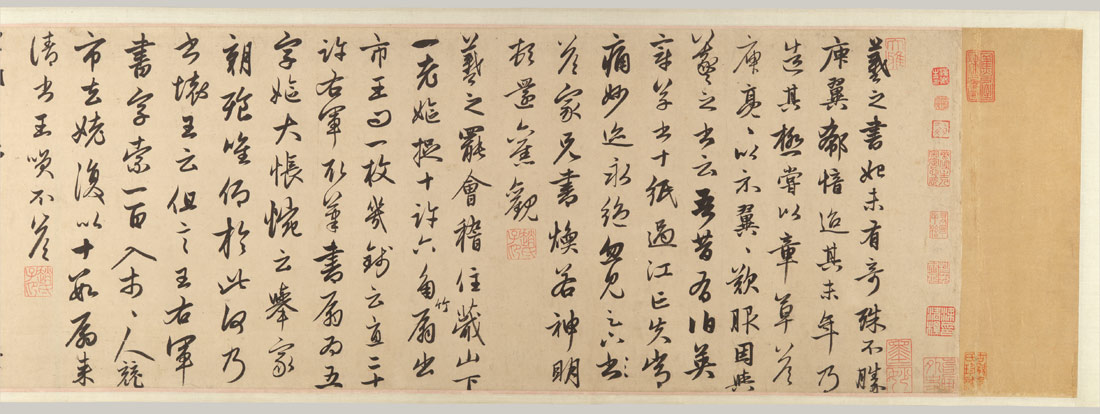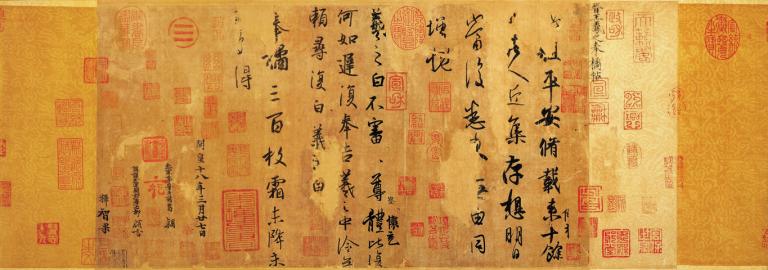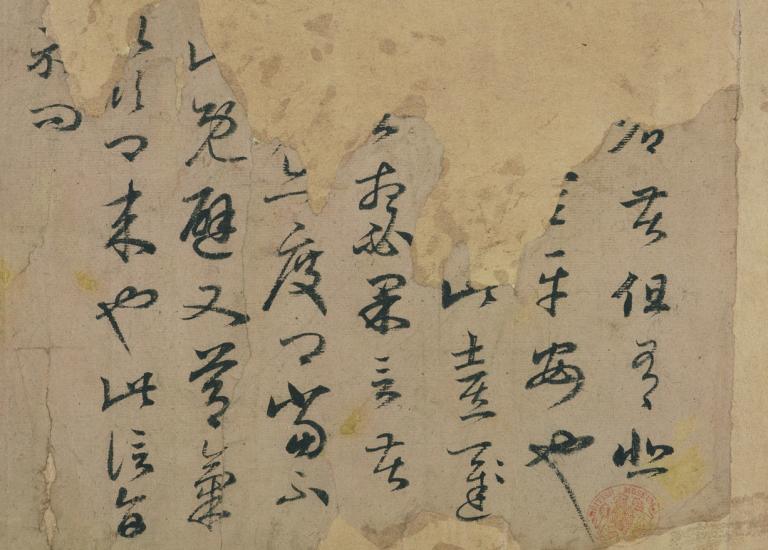Wang Xizhi: Sage of Calligraphy
4 min readAs an important part of literary embellishment in the Eastern Jin and the Southern dynasties, calligraphy had attracted much attention. It was natural that a great number of calligraphists came from the four distinguished families in the Eastern Jin, namely Wang, Xie, Yu and Xi. Influenced by the literary embellishment of novelty and beauty, and the graceful and iconoclastic calligraphic pursuits, calligraphy in this period had gained enormous progress in terms of creativity.

Newness and grace had replaced simplicity and clumsiness. Regular script, semi-cursive script and cursive script finally shook off the shadow of clerical script and gained progress and evolution respectively. Wang Xizhi and Wang Xianzhi, who had made the greatest achievement, were the two representatives among the most influential calligraphists in this period. Wang Xizhi (303-361), courtesy name (zi) Yishao, was born in Langya (now Linyi, in Shandong), and later moved to Kuaiji, Shanyin (now Shaoxing, in Zhejiang).
It was said that he began to write at seven, secretly read Cai Yong’s book in calligraphy at twelve, and then was taught by Lady Wei. He had visited numerous famous mountains, where he saw the script of Li Si and Cao Xi, the words of Zhong Yao and Liang Hu, and even the Stone Classics of Xiping Reign. Later, he saw and appreciated Zhang Chang’s script, which further broadened his vision of calligraphy. From then on, he digested characteristics of calligraphers from different dynasties, and innovated in the plain style of the Wei and Jin dynasties, to form a new style of flowing grace. Owing to his wonderful achievement, Wang Xizhi is honored by later generations as “Sage of Calligraphy”. Wang Xizhi was proficient at many scripts while his most prominent achievements were made in the regular script and semi-cursive script. In the history of calligraphy development, though he had studied the writing technique of Zhong Yao from Lady Wei, he had been so innovative that his strokes and font styles were diversified and able to demonstrate even more abundant aesthetic feelings. Even from his works in small regular script of rubbing copies, we could sense the spirit and beauty of Wang style calligraphy.

He thought his works in cursive style were not as good as that of Zhang Zhi whom he had learned cursive calligraphy from. As a matter of fact, he had added something of his own and formed a new style of cursive script, which was compact and manifested more features of the Wei and Jin dynasties. Therefore, his works in cursive script, including semi-cursive script in a broad sense, demonstrated his highest achievement in calligraphy. Among them, Preface to the Literary Gathering at the Orchid Pavilion is highly valued as the “best semi-cursive script in China”. There was story behind the eminent Preface to the Literary Gathering at the Orchid Pavilion.
On March 3rd, 538, Wang Xizhi, Xie An and other 39 guests were gathering at the Orchid Pavilion for the purification rites of spring. Along with the wine drinking pleasure, each guest was invited to compose a poem. The poems were collected into a poetry anthology, for which Wang Xizhi wrote a preface with all his passion and calligraphy ability into full play. Hence we have the Preface to the Literary Gathering at the Orchid Pavilion that can be passed from generation to generation. In the masterpiece, the primitive simplicity and clumsiness of calligraphy from earlier period disappeared, and the strokes and structures were both precise and refined. It was also considered as the most graceful and pleasant one among all calligraphic works. The preface pioneered new styles and played an important role in the history of calligraphy. It also clearly demonstrated the transformation of his calligraphy from the plainness in earlier times to the later refinement. Up to then, the regular, semi-cursive and cursive script had got rid of the influence of the clerical style, and the evolvement of different script was basically accomplished.
In the history of calligraphy, however, Wang Xianzhi, the son of Wang Xizhi, can never be neglected. He inherited the style of his father and further developed it, enjoying an equal fame with his father, thus they were known as “Two Wang”. Wang Xianzhi (344-386), courtesy name (zi) Zijing, was the seventh son of Wang Xizhi. When he was very young, Wang Xianzhi, mentored by his father, began to show great interests and talent in calligraphy He was good at all kinds of scripts, especially accomplished in cursive style and semi-cursive style. At the age 15 16, when communicating with his father, he said that the traditional clerical cursive script were too stiff to become imposing and elegant. After an intensive study of the essence of calligraphy, Xianzhi found that the soul of later cursive style lied in the unruly freedom. Later he even tried to persuade his father to change style as he believed that everything existed in a changing state so no rule should be fixed for calligraphy.
His aesthetic style of indulgence and wildness differed from that of his father. One of Wang Xianzhi’s works was in small regular script, nine lines of which were collected by Emperor Gaozong of the Southern Song dynasty and four lines were found by Jia Sidao and carved in jade. And the version on jade was the prominent “Jade Thirteen Lines”. The original work was lost sometime later, but the carved stone is now displayed in the Palace Museum in Beijing. The descendents of Wang family, among them were many famous calligraphers, inherited the calligraphy style of Wang Xizhi and Wang Xianzhi. The Eastern Jin dynasty was one of the most prosperous periods in the history of Chinese calligraphy. Unfortunately, among the all extant calligraphic works produced by eminent noble calligraphers of that period only one is original.









